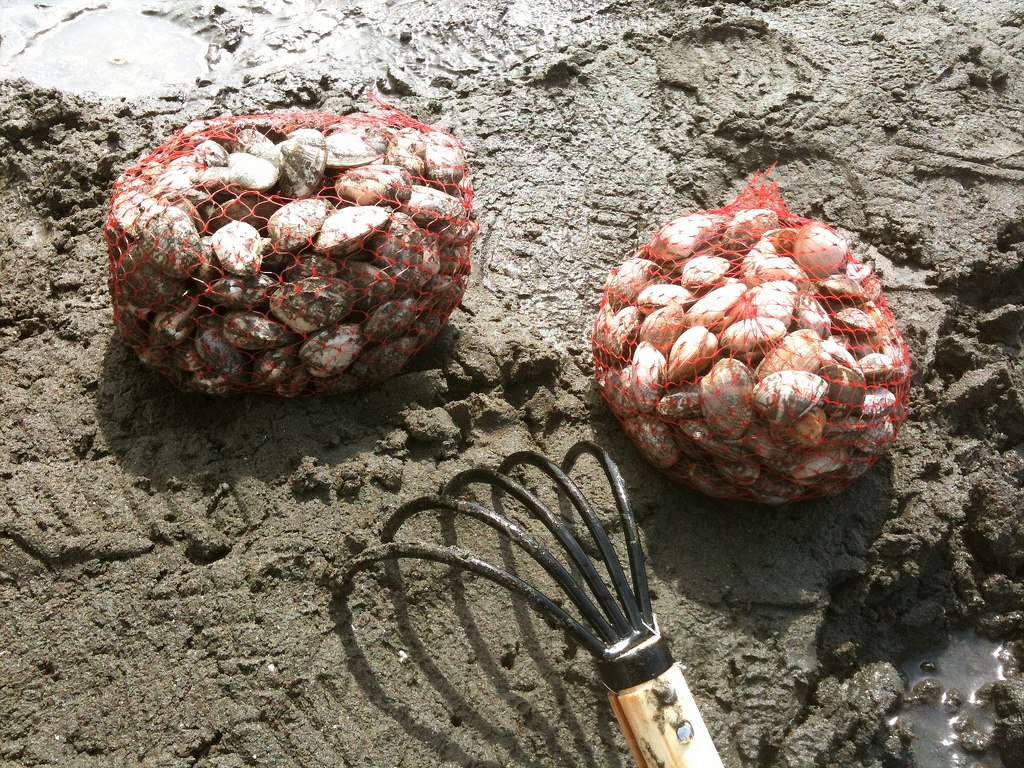Aug 24, 2017
Digging into the Rituals of Clam Digging

They begin showing up on the beaches in late spring and continue to gather all summer long, armed with small rakes (kumades), plastic buckets, and mesh bags. It is Shiohigari time – literally “hunting in the tides.” The Japanese tradition of digging in the sand for shellfish, mostly clams, is so ingrained in the culture that the word Shiohigari is sometimes substituted for springtime itself.
Clams can only be dug at low tide and so practitioners of Shiohigari study the tide tables to pick the best times to hit the beaches. The media often report on clam digging conditions through the season. Real aficionados know that different species of clams wash up on the beaches at different times during the year and different places. The Japanese carpet shell is the most common quarry for clam diggers, it accounts for 25 percent of all mollusks consumed in the world.
Beaches near big cities will become crowded and the best mud flats for digging clams are controlled by local fishermen’s unions so fees are charged to access the beach. There are typically clam digging stations that will set the regulations for the day and rent equipment. If a harvest has been especially bountiful, additional monies can be charged to diggers commensurate with their catch. Anyone can successfully hunt shellfish and Shiohigari is one of Japan’s most beloved family activities. It is so popular that some beaches will sell advance tickets in local stores.
Once on the sand, clam digging can be arduous work, either on hands and knees or stooped over. Short pants or rolled up long pants are the uniform of the Shiohigari. Sandals or old shoes are worn to keep from inadvertently slicing open a foot on a shell. A hat is a good idea for protection from the sun.
Plucking the coveted bivalves from their subterranean homes
The clams are usually buried out of sight at least two centimeters below the surface so it is necessary to feel for the shells with the kumade. One clue as to whether a clam is hiding under foot is by examining the surface for small holes. Dig where the mud is flat since that is an indication that the ground has not been harvested by another Shiohigari. A favored technique is to dig shallow and wide rather than deep. When a clam is encountered it must be extricated by hand and dropped into the bucket. Keep the bucket filled with salt water to keep the clams alive and shells closed.
And what to do with all those clams? Soak the bivalves in salt water to sift out the sand and keep the animals alive until cooking. Then douse the catch in sake and steam them for a tasty dinner after a good day’s hunt.
One of the best areas around Kansai to dig clams is Tokimeki Beach (http://www.osaka-info.jp/en/events/festivals_events/post_170.html), also known as the Tannowa Shellfish Gathering Beach. There is a fee to use the beach for adults and children and barbecue grills can be rented to cook your catch fresh on the beach.
By Flickr user ysishikawa [CC BY 2.0], via Wikimedia Commons


About the author